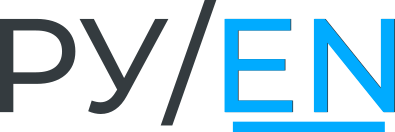Port is a device in the EcoRouter, that works at the data-link level. Physical ports are located on the front panel of the router.
The logic of naming and enumeration are described in the Equipment section.
By default, all ports are enabled on your device.
Below the basic port configuration commands are shown.
The transition to the level of a specific port's configuration. Where te1 is its name:
ecorouter (config) #port te1
Setting mtu values different from the standard in the range of 1504-9728. Optional parameter.
ecorouter (config-port) #mtu 1600
MTU (maximum transmission unit) means the maximum useful size of a data block in a packet (payload), which can be transmitted by the protocol without fragmentation. When saying MTU, usually relates to the link layer protocol of the OSI model.
For many network protocols MTU does not exceed 1522 but in EcoRouter it is possible to set the MTU value in the range from 82 to 9728. In this way it becomes possible to use Jumbo frame (ethernet-frame for transmitting the data, greater than 1500 bytes).
For administrative port shutdown use shutdown command in the port configuration context.
For administrative port turn on use no shutdown command in the port configuration context.
For both of these commands you will see report about link state changing.
If the port is turned off by system you will see in show port command its state like "administratively down".
All interfaces and service instances that are bound to the switched off port will be also switched off.
Example:
ecorouter#show port
Gigabit Ethernet [igb] port ge3 is up
MTU: 9728
LACP priority: 32767
Input packets 12757610, bytes 4507446111, errors 0
Output packets 41139047, bytes 47165314669, errors 0
Service instance ge3.olia is up
ingress encapsulation untagged
ingress rewrite none
egress encapsulation untagged
egress none
Connect bridge raccoon symmetric
Input packets 12757610, bytes 4507446111
Output packets 41139681, bytes 47165195683
Gigabit Ethernet [igb] port ge4 is down
MTU: 9728
LACP priority: 32767
Input packets 1468304, bytes 249589783, errors 0
Output packets 4598726, bytes 5586328327, errors 0
Service instance ge4.sergey is down
ingress encapsulation untagged
ingress rewrite none
egress encapsulation untagged
egress none
Connect bridge raccoon symmetric
Input packets 1468303, bytes 249590010
Output packets 4653951, bytes 5592867728
Gigabit Ethernet [igb] port ge5 is up
MTU: 9728
LACP priority: 32767
Input packets 6878595, bytes 3664083768, errors 0
Output packets 13210832, bytes 14688926470, errors 0
Service instance ge5.alexander is up
ingress encapsulation untagged
ingress rewrite none
egress encapsulation untagged
egress none
Connect bridge raccoon symmetric
Input packets 6878604, bytes 3664084308
Output packets 13212782, bytes 14688868859
Gigabit Ethernet [igb] port ge6 is down
MTU: 9728
LACP priority: 32767
Input packets 3103204, bytes 504476889, errors 0
Output packets 5093754, bytes 4810094601, errors 0
Service instance ge6.timurr is down
ingress encapsulation untagged
ingress rewrite none
egress encapsulation untagged
egress none
Connect bridge raccoon symmetric
Input packets 3103202, bytes 504475973
Output packets 5125510, bytes 4812650924
Gigabit Ethernet [igb] port ge7 is down
MTU: 9728
LACP priority: 32767
Input packets 0, bytes 0, errors 0
Output packets 0, bytes 0, errors 0
ecorouter(config)#port te0
ecorouter(config-port)#shutdown
ecorouter(config-port)#[Fri Sep 2 08:31:10 2016][INFO] PHYS: LINK is DOWN on port 'te0(0)'
ecorouter#show port
10 Gigabit Ethernet [none] port te0 is administratively down
MTU: 9728
LACP priority: 32767
link state DOWN;
Input packets 0, bytes 0, errors 0
Output packets 0, bytes 0, errors 0
Service instance te0.100 is down
ingress encapsulation none
ingress rewrite none
egress encapsulation none
egress none
Input packets 0, bytes 0
Output packets 0, bytes 0
Service instance te0.200 is down
ingress encapsulation dot1q any
ingress rewrite none
egress encapsulation dot1q any
egress none
Input packets 0, bytes 0
Output packets 0, bytes 0
10 Gigabit Ethernet [none] port te1 is up
MTU: 9728
LACP priority: 32767
link state UP;
Input packets 0, bytes 0, errors 0
Output packets 0, bytes 0, errors 0
ecorouter(config-port)#no shutdown
ecorouter(config-port)#[Fri Sep 2 08:34:28 2016][INFO] PHYS: LINK is UP on port 'te0(0)'
ecorouter#show port
10 Gigabit Ethernet [none] port te0 is up
MTU: 9728
LACP priority: 32767
link state UP;
Input packets 0, bytes 0, errors 0
Output packets 0, bytes 0, errors 0
Service instance te0.100 is up
ingress encapsulation none
ingress rewrite none
egress encapsulation none
egress none
Input packets 0, bytes 0
Output packets 0, bytes 0
Service instance te0.200 is up
ingress encapsulation dot1q any
ingress rewrite none
egress encapsulation dot1q any
egress none
Input packets 0, bytes 0
Output packets 0, bytes 0
10 Gigabit Ethernet [none] port te1 is up
MTU: 9728
LACP priority: 32767
link state UP;
Input packets 0, bytes 0, errors 0
Output packets 0, bytes 0, errors 0





